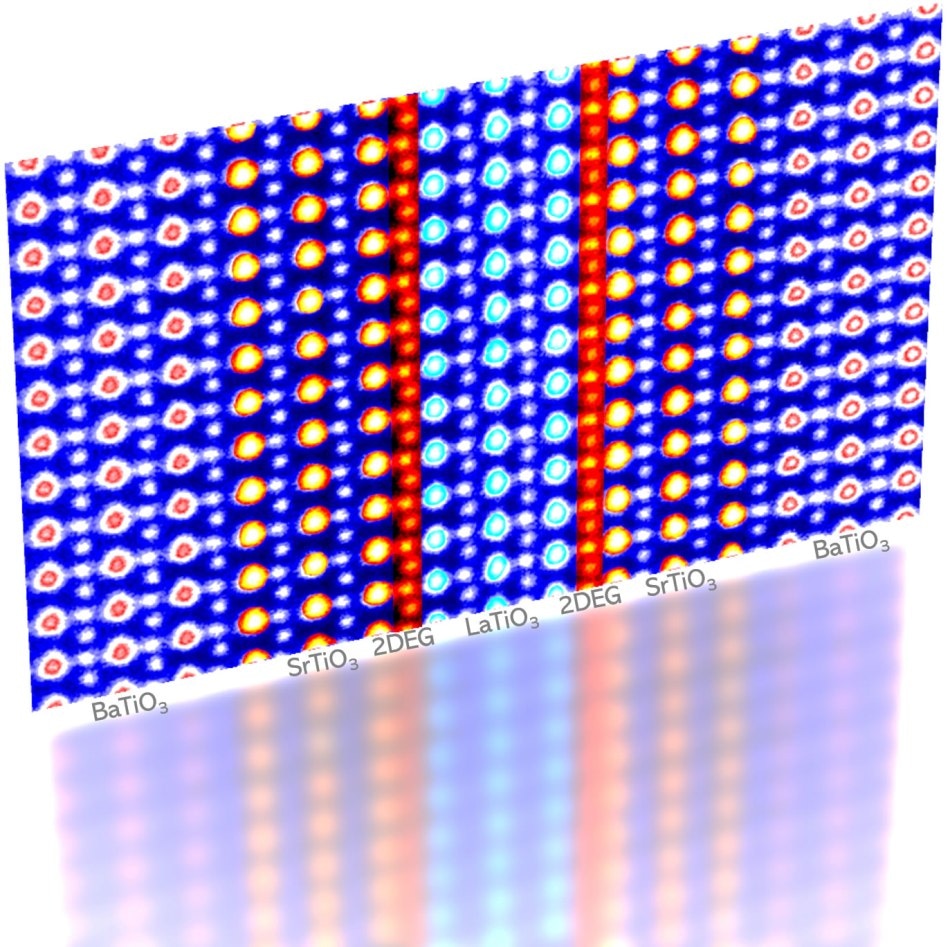Jun 11 2018
 The positions of atoms in a ferroelectric-like metal that contains barium titanate, strontium titanate and lanthanum titanate. (Image: Zhen Wang and Yimei Zhu; image obtained at Brookhaven National Laboratory)
The positions of atoms in a ferroelectric-like metal that contains barium titanate, strontium titanate and lanthanum titanate. (Image: Zhen Wang and Yimei Zhu; image obtained at Brookhaven National Laboratory)
In 1965, a distinguished Princeton University physicist theorized that ferroelectric metals could conduct electricity in spite of not existing in nature. For years, researchers believed it would be impossible to confirm the theory by Philip W. Anderson, who shared the 1977 Nobel Prize in physics. It was like trying to mix water and fire, but a Rutgers-led international team of researchers have now proved the theory. Their findings can be found in Nature Communications.
It’s exciting, we created a new class of two-dimensional artificial materials with ferroelectric-like properties at room temperature that don’t exist in nature yet can conduct electricity. It’s an important link between a theory and an experiment.”
Jak Chakhalian, Lead Author
A keystone of technology, ferroelectric materials are used in electronics such as cell phone and other antennas, medical equipment, computer storage, ultra-sensitive sensors, high precision motors, and sonar equipment. All of their materials do not conduct electricity and the Rutgers-led findings possibly could seed a new generation of applications and devices, Chakhalian explained.
Like a number of physicists, Chakhalian enjoys a challenge and he could not locate a law of physics that states ferroelectric metals could not be formed.
So his team, including research lead author Yanwei Cao, a former doctoral student who is currently a professor at the Chinese Academy of Sciences, tapped Chakhalian’s high-tech tools to develop sheets of materials just a few atoms thick. It’s similar to making sandwiches, Chakhalian stated.
When a material becomes ferroelectric, its atoms shift permanently and we wanted to add metallic properties to an artificial crystal that conducts electricity.
So we took two very thin layers to create a two-dimensional metal at the interface and added a third layer with special properties to shift the atoms in that metallic layer, creating a ferroelectric-like metal. The new structure has several functionalities built-in, and this is a big win-win.”
Jak Chakhalian, Lead Author
Research co-authors at Rutgers include post-doc Xiaoran Liu; Mikhail (Misha) Kareev, a staff member of the condensed matter experimental group; and theoretician Karin M. Rabe, a Professor of Physics.